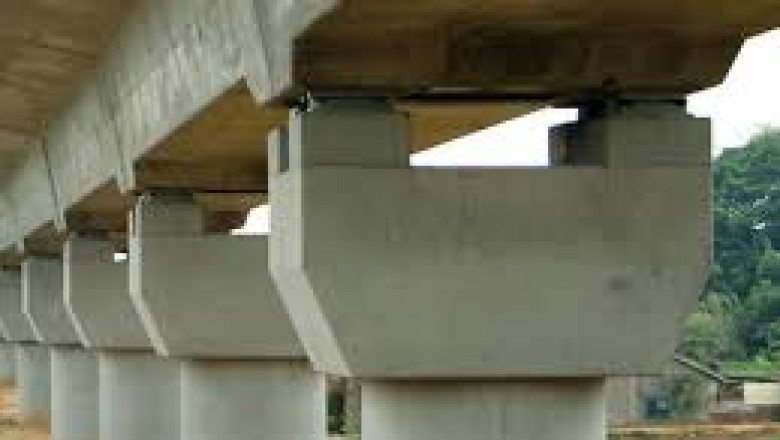views
The demand for bridge bearings—the pivotal components that transfer loads and accommodate movements between a bridge’s superstructure and substructure—has risen steadily in recent years. As global infrastructure initiatives accelerate, aging bridge rehabilitation becomes essential, and seismic resiliency gains prominence, the need for reliable, high-performance bearings has never been greater. This article explores the principal factors driving demand in the bridge bearing market, highlighting industry trends that will define growth in the coming decade.

1. Surge in Infrastructure Investments
Governments and private entities worldwide are allocating unprecedented budgets to build and upgrade transportation networks. In emerging economies across Asia-Pacific, Latin America, and Africa, rapid urbanization and economic expansion spur new highway and railway bridge projects. Mature markets in North America and Europe, faced with decades-old bridges reaching the end of their design life, are investing heavily in replacement and rehabilitation. These capital expenditures directly translate into robust demand for a wide range of bearing types—including elastomeric, pot, spherical, and sliding bearings—tailored to specific load and movement requirements.
2. Aging Bridge Stock and Rehabilitation Projects
Many bridges constructed in the mid-20th century are now showing signs of fatigue, corrosion, and material degradation. Bridge bearings, which carry substantial vertical and lateral forces while allowing thermal expansion and contraction, often exhibit wear or stiffness loss over time. Rehabilitation programs prioritize bearing replacement to restore structural integrity and extend service life. Retrofit solutions—such as drop-in modular bearings—are in high demand because they minimize traffic disruptions and shorten on-site installation periods. Consequently, aftermarket sales and service contracts account for a growing share of total market revenue.
3. Heightened Seismic Safety Requirements
Regions prone to earthquakes have adopted stringent seismic design codes, mandating the installation of seismic-isolating bearings. Technologies like lead–rubber bearings and friction pendulum systems help absorb and dissipate seismic energy, safeguarding both the structure and its users. As seismic risk assessments become more detailed, many existing bridges undergo retrofits to incorporate these specialized bearings. The resulting compliance-driven demand offers a stable, long-term growth trajectory for manufacturers of earthquake-resilient bearing solutions.
4. Urbanization and Traffic Growth
Expanding urban populations and freight volumes place heavier loads on bridges, elevating the performance requirements for bearing systems. Multi-lane urban flyovers, interchanges, and rail overpasses experience constant dynamic loading, necessitating bearings that can withstand high-frequency traffic cycles without premature degradation. Municipalities and transit authorities are responding by specifying higher-capacity bearings with improved fatigue resistance and lower maintenance needs. This trend toward heavy-duty applications drives innovation in advanced elastomer compounds and reinforced steel bearings.
5. Sustainability and Lifecycle Cost Considerations
Public agencies and engineering firms increasingly evaluate bridges through a lifecycle-cost lens, weighing upfront capital costs against long-term maintenance and replacement expenses. Bridge bearings fabricated from corrosion-resistant alloys, high-damping materials, or composite blends often command higher initial prices but boast extended maintenance intervals and superior environmental resistance. The desire to minimize carbon footprints further propels demand for bearings manufactured under green production processes, as well as those incorporating recycled or bio-based materials.
6. Integration of Smart Monitoring Technologies
Digital infrastructure has opened the door to “smart bearings” equipped with embedded sensors that track displacement, stress, temperature, and vibration in real time. Asset managers leverage these data streams to perform predictive maintenance, reducing unplanned closures and optimizing inspection schedules. Bridges in mission-critical corridors—such as high-speed rail lines and major freight routes—are prime candidates for sensor-enabled bearings. As the cost of sensing and data analytics falls, adoption of intelligent monitoring systems will become a major market driver.
7. Modular and Prefabricated Installation Methods
To address escalating labor costs and minimize traffic disruptions, bridge bearing manufacturers are expanding their modular product lines. Prefabricated assemblies pre-tested in factory settings offer high precision and consistent quality. During installation, these ready-to-fit modules can be rapidly replaced using gantries or jacks, slashing on-site work hours. Infrastructure planners prize this “fast-track” capability, particularly in urban environments where bridge closures carry steep economic and social costs. As modular solutions proliferate, they will capture an ever-larger share of the overall bearing demand.
8. Public-Private Partnerships and Financing Models
Innovative financing structures—such as public-private partnerships (PPPs), toll revenues, and infrastructure bonds—are unlocking capital for long-overdue bridge projects. In many cases, bearing suppliers partner with contractors and asset managers to offer performance-based contracts that include supply, installation, and long-term maintenance guarantees. These integrated service agreements ensure predictable revenue streams and cement supplier relationships, fueling market demand as PPPs expand globally.
9. Regulatory and Code Harmonization
The gradual harmonization of international bridge design standards makes it easier for bearing manufacturers to enter multiple markets with standardized product lines. As cross-border trade and infrastructure collaborations grow, uniform seismic, material, and testing codes reduce the need for region-specific bearing variants. This regulatory alignment encourages economies of scale and accelerates the adoption of advanced bearing technologies in previously fragmented markets.
Conclusion
The bridge bearing market stands at the intersection of vast global infrastructure investment, pressing rehabilitation needs, and technological progress. Robust demand is anchored by new construction, retrofit programs, seismic safety upgrades, and the rise of smart, sustainable solutions. Manufacturers that align their offerings with modular installation methods, sensor integration, and lifecycle cost optimization will secure strong positions in this dynamic landscape. As cities grow and aging bridges require renewal, the imperative to deploy high-performance bearings ensures that market demand will remain resilient and expanding for years to come.






















Comments
0 comment